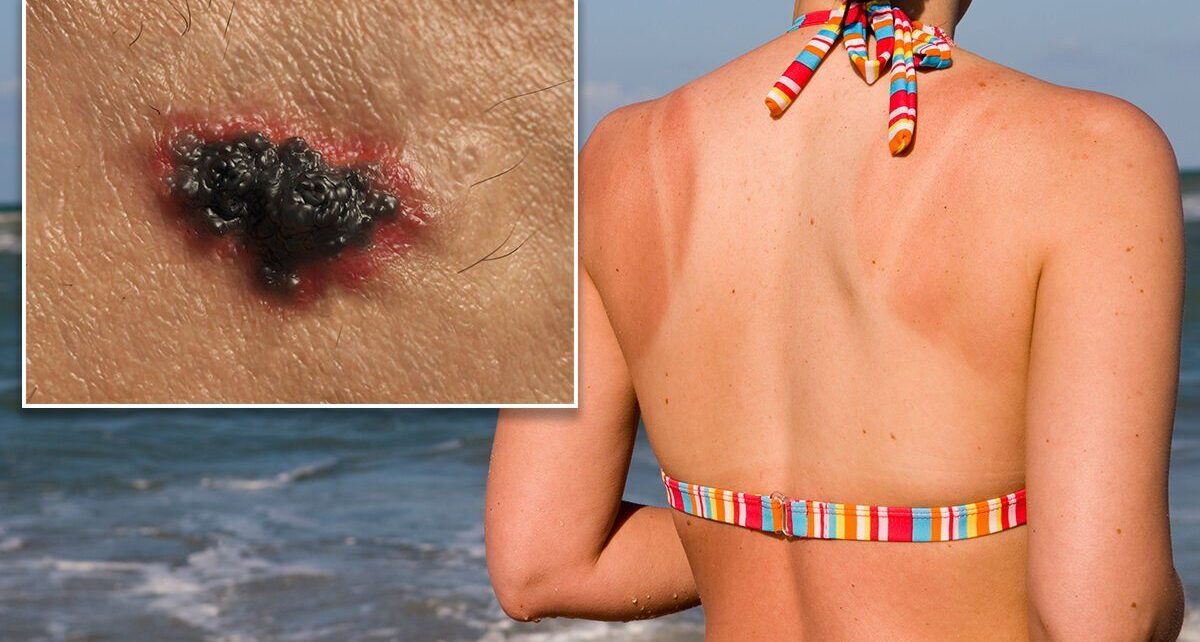This Morning: Jon Courtenay recalls skin cancer diagnosis
We use your sign-up to provide content in ways you’ve consented to and to improve our understanding of you. This may include adverts from us and 3rd parties based on our understanding. You can unsubscribe at any time. More info
Dr Haytham Al-Rawi says: “The highest risk factor for malignant melanoma is exposure to UV light.
“Melanoma is caused when the pigment producing cells, or melanocytes, on our skin mutate and become cancerous.”
As a result, one of the best ways to reduce the risk of developing skin cancer is to protect the skin through either covering the skin or applying suntan lotion.
It is important to apply the right lotion for the right conditions.

One of the reasons for the particular focus on skin cancer this year in Britain is because rates have been rising steadily over the past decade.
Since 2012, the number of people with skin cancer has risen by 50 percent.
Dr Al-Rawi says awareness has been one of the biggest influences for the rise in diagnoses among older individuals who bathed in the sun unprotected in the 1970s and 1980s.
However, the biggest factor is down to a raw rise in disease numbers pushed in part by an increase in the number of warm days in the UK and rise in the use of sunbeds.
On the historic cases Al-Rawi says the problem has been “stored up” thanks to antiquated notions of how to protect a person’s skin from the sun.
As well as changing notions on protection, from olive oil to SPF, Al-Rawi, consultant dermatologist at Little Aston
Hospital in Birmingham, says people need to be more vigilant on cloudy days.
Even on days when the sun isn’t visibly penetrating through the clouds the dangerous UV light is.
It’s why it’s possible to get sunburnt even if there’s no sun.

The most at risk, says Julia Newton-Bishop of the University of Leeds, are “pale-skinned people” who traditionally face the highest rates of the disease.
This skin-bracket constitutes a significant proportion of the UK population, providing an idea of the numbers of people who could be affected by an increased risk of skin cancer.
Although skin cancer, just like any other cancer, is a terrifying prospect for many it is easily treatable.
Statistics show around three quarters of patients diagnosed with malignant melanoma have their cancers excised (removed) and go on to live for as long as other people who have not had the operation.

The most important thing, as with other cancers, is to get anything that appears out of the ordinary inspected as soon as possible.
If it turns out to be nothing, it is far better to get it checked then to leave it for a few months and find out something could have been done about it.
Every year around 147,000 cases of non-melanoma skin cancer are diagnosed in the UK.
Skin cancer is more likely to affect men than women.
Source: Read Full Article



